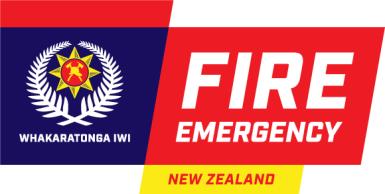

 National Headquarters
National Headquarters
Fire and Emergency New Zealand
National Headquarters
Spark Central, Level 7
42-52 Willis Street
Wellington Central
Wellington 6011
Phone +64 4 496 3600
26 March 2025
Ref: 17116
Mark Grayson
[FYI request #29804 email] Tēnā koe Mark
We refer to your request of 14 February 2025, to Fire and Emergency New Zealand, requesting
further information relating to the incident that occurred at Phoenix Recycling, Takanini on
8 January 2025 (F4123512). Your request has been considered under the Official Information Act
1982 (OIA) and our response is below. Please note that though your questions are answered in the
same order as per your request, some numbering differs to what you outlined.
1. Is there a procedure in place for scrapyard fire response or event coding at the
Communications Centre?
We can advise there isn’t a specific procedure or event type for a scrapyard fire. Scrapyard Fires
are treated the same way as all other incidents received by our Communication Centres (ComCen).
The nature of the fire is considered along with the threat to other property, including buildings
and vegetation. In this case, all callers advised that this was a pile of rubbish on fire which was not
reported to be posing a threat to any structure.
2. Was the calltaker who took the first call to this incident aware of what they were dealing
with? Can Fire and Emergency confirm this was a member of the Communications
Management Team who took the call?
Yes, the Centre Manager was assisting on the phones that day and they took the first call, and was
aware of what they were dealing with.
3. Why was a second pump responded only one minute after the initial turnout, but the
incident type not amended?
The second appliance was called to respond because the first responding appliance did not meet
their minimum staffing requirements. The incident type was not amended as this appliance was
added in accordance with our Reduced Crew Procedure.

 4. Why did the Shift Manager in the Communications Centre not upgrade this event to a
Structure Fire, considering a second pump was immediately added and incidents of the
4. Why did the Shift Manager in the Communications Centre not upgrade this event to a
Structure Fire, considering a second pump was immediately added and incidents of the
same nature have been treated as such previously?
The incident was correctly coded as there was no threat to structures or vehicles.
5. Why was an aerial appliance not initially also responded or considered given the nature of
the high risk industrial environment and material, as well as firefighting capabilities at
scrapyards?
All information was passed to the responding crew. Upon arrival and assessment of the situation
by the Officer in Charge (OIC), a priority request was made for an aerial appliance at 10:51:29 as
seen on page three of the SMS Incident Report (SMS Report) we provided you on 13 February
2025.
6. The initial sitrep indicated a Senior Firefighter (SFF) was in charge of the incident, was
there an officer in attendance at the incident on either of the first two attending
appliances? How well experienced was the Senior Firefighter, and were they qualified at
the time to act up in this position?
On the day of the incident, of the nine career appliances in Counties Manukau Fire District that
require an officer, there were four Senior Firefighters riding as OICs. This was due to either
sickness or annual leave coverage and all of them were qualified to ride as OICs. The Senior
Firefighter in charge of this incident is qualified as a Station Officer.
7. Was there a Senior Station Officer (SSO) responded who attended this incident?
There was not a Senior Station Officer (SSO) in attendance at this incident.
8. Why was an executive officer not notified sooner given the escalating incident, risk factor
and the lack of officers on scene?
On arrival the initial situation report suggested a small, localised fire. Upon escalation of the
incident by the SFF riding as OIC, an Executive responded to provide support, mentoring and
overview. Referring to the SMS Report provided previously, pages 1-3:
• 1st appliance arrived at 10.34am
• notification to Executive Officers at 10.40am
• priority message of scrap metal fire 5mx5m asking for aerial appliance at 10.51am; and
• Executive Officer on receiving this message K1 (proceeding to incident) at 10.56am
9. Did the Communications Centre have access to the JTOC camera footage mentioned and
were they able to watch it in real time? Is the Shift Manager able to make operational
decisions based on what is shared or visible to them?
ComCen does have access to the JTOC camera footage which was able to be watched in real time.
The Shift Manager is able to make operational decisions based off information that is shared or
visible to them. In this instance, the information was passed to the responding crews for them to
consider as the Incident Controller.

 10. There was a significant delay in the response of OTAH3112. It took over 11 minutes to
respond. It appears OTAH311 were responded to pick it up from Otahuhu Station, but they
10. There was a significant delay in the response of OTAH3112. It took over 11 minutes to
respond. It appears OTAH311 were responded to pick it up from Otahuhu Station, but they
were possibly enroute to Manurewa Station on cover. What caused the delayed response
of OTAH3112?
OTAH3112 does not have a crew assigned to it. It is operated by the crew from another appliance
(referred to as Cross-Crewed).
11. Did Otahuhu respond from Manurewa back to Otahuhu, and then to the incident?
We cannot determine exactly where the Otahuhu pump was when it was sent to Otahuhu Station
to uplift the Hose Layer. The Otahuhu pump had been on a “cover move” from Otahuhu Station to
Manurewa Station since 10.55am and was dispatched to uplift the Hose Layer at 11.14am.
A cover move is moving a fire truck from one station to another station to ensure there is
adequate cover for any new incident or when the current incident(s) escalates to meet Service
Performance Expectations for Fire and Emergency arriving on scene.
12. What is the minimum time for an appliance to respond (go K1)?
For crewed career appliances, the time to respond is 90 seconds. But OTAH3112 is not considered
a crewed career appliance and they have no minimum time to respond.
13. Would it have been better suited for a closer appliance than Otahuhu to respond and uplift
the hose layer?
It was determined that of the available trucks with familiarity with operating the Hose Layer, the
responding Otahuhu appliance was the most appropriate to uplift the Hose Layer.
14. Referring to Fire and Emergency's reply to point 7 regarding standard operational
coverage: The Avondale appliance was moved to Manurewa station after three other
"cover moves" were conducted. Is there a reason that an appliance, especially a Pump
Rescue Tender was moved from further afield rather than a closer appliance such the
Mangere, Otara, Onehunga or Mount Roskill pumps?
Cover moves are dynamic, and consideration was given to ensure there was adequate rescue
capability across Auckland at the time of the incident.
15. Did this leave the Avondale area without firefighting or rescue tender coverage for the
period of time it was moved? How long was this for? Did this leave the 'ghost-manned'
truck AVON6015 also without a crew to respond and operate it?
For rescue incidents, the Service Performance Expectations require a rescue resource to arrive
within 30 minutes. Should the Breathing Apparatus Tender (AVON6015) have been required at an
incident, this could have been uplifted by another crew.
16. On other incidents involving the same 'watch' it appears Avondale is constantly moved for
maintaining operational coverage. Is there a reason this appliance is always moved to
other stations instead of closer resources? Does this constantly leave the Avondale area
without any coverage?


Avondale’s area had adequate firefighting coverage from nearby stations, including Mount Roskill,
Glen Eden and Balmoral. There was adequate rescue coverage from Henderson and Auckland City
Station. Consideration is given during cover moves to ensure there is capability across Auckland.
17. Is there a guideline or process on maintaining coverage across the Auckland area?
The process of maintaining coverage across the Auckland area sits with the ComCen Shift
Managers. They have delegated authority for decisions regarding moving fire appliances as
required to maintain adequate cover.
Consideration is given by them to ensuring there is adequate
coverage and capability across Auckland. The on-duty ComCen Shift Manager is allowed discretion
to consider the “big picture” for coverage considering all incidents and stations.
We trust that the information being provided is of assistance. If you require further information,
please email [FENZ request email]
Nāku noa, nā
Aidan Saunders
Manager, Information Requests








